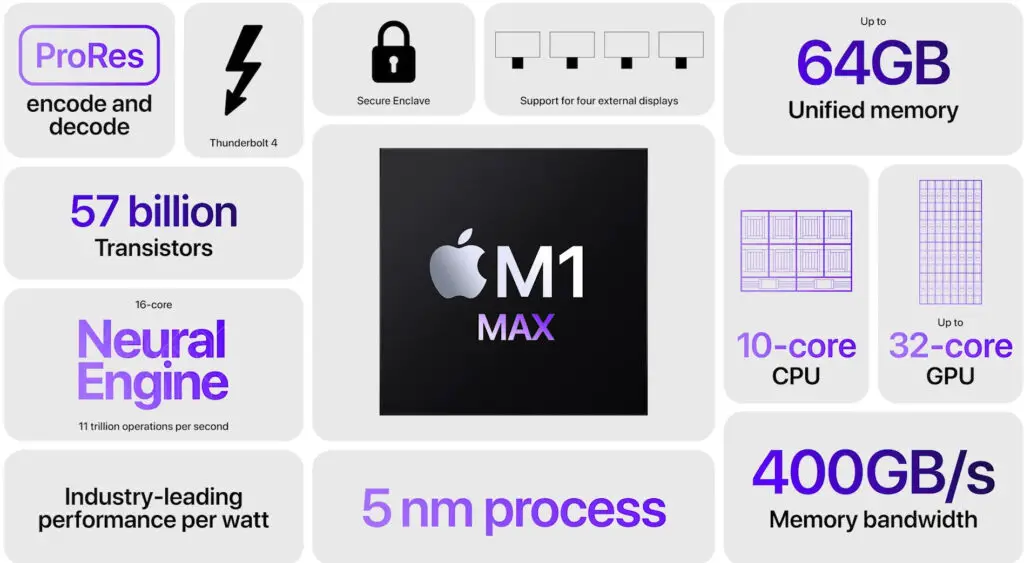Apple boasts that its new M1 Max SoC outperforms Nvidia’s RTX 3080 gaming laptop GPUs
The GPUs found in the finest gaming laptops, both discrete and integrated, have significantly improved over the last few years and now provide respectable gaming and productivity performance when compared to their desktop counterparts. However, when it comes to productivity performance, Apple has changed the game with the latest iterations of its M1 SoCs, particularly the M1 Max, which the firm claims can compete with and even surpass Nvidia RTX 3080 graphics cards.
The M1 Max has 10 CPU and 32 GPU cores, as well as 64GB of unified LPDDR5 RAM, all housed in a single SoC. It’s worth noting that the M1 Max is an ARM-based device, but all of the greatest gaming CPUs from Intel and AMD are based on an x86 instruction set, making performance comparisons only partially indicative of ARM’s potential advantages over x86-based processors. This is all the more fascinating given Nvidia’s plans to develop its own ARM chips to compete with Apple, AMD, and Intel.
At its most recent event, Apple demonstrated benchmarks demonstrating that its new M1 Max can give the same “relative performance” as integrated and discrete graphics solutions in “chosen industry-standard benchmarks,” while exponentially increasing performance per watt.
Apple claims that the M1 Max gives the same level of performance as the RTX 3080 featured in the Razer Blade 15 Advanced and MSI GE76 Raider laptops while using 40% and 100W less power, respectively. More impressive, the chip is said to be able to maintain this level of performance while running on battery power, whereas the RTX 3080s in the aforementioned laptops perform 2.5-3.3 times slower than the M1 Max.
This data, like all benchmarks provided by manufacturers, should be treated with caution. Furthermore, as compared to Windows or even Linux, native macOS ports of AAA titles are few. So, while the M1 Max appears to be one of the greatest graphics cards for laptops on paper, it should not be considered by anyone whose main priorities are gaming and productivity (especially if you’re paying $4,000 USD).
